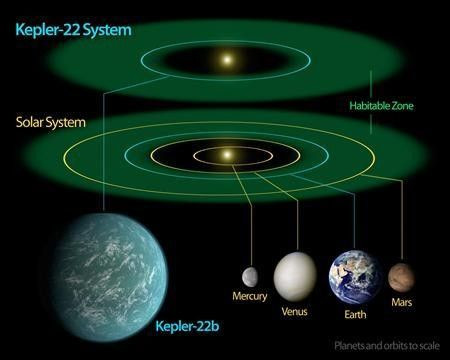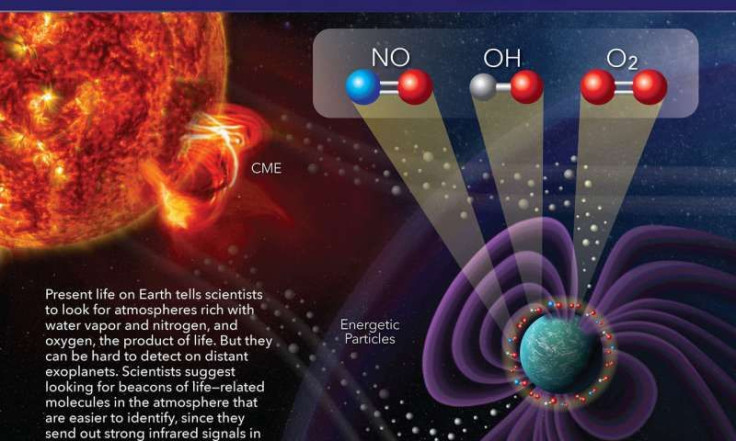NASA Scientists To Use 'Beacons' To Find Habitable Exoplanets

Our search for life outside the solar system has just been getting stronger since E.T. hit the screens. We are constantly on the lookout for life from other planets. New research by NASA has proposed an interesting way in making this search a little more efficient. They found out that the frequent stellar storms, which hurl huge clouds of space rubble and radiation into space from the surface of young dwarf stars, highlights signs of habitable exoplanets.
Space scientists tend to look at potential biosignatures as ways of identifying habitable worlds. Currently, we try and study the oxygen or methane cover that, over time, accumulate s in the atmosphere where it can be detected. Traces of this points to a planet that can hold life and tells researchers that pursuing a study of this planet may have a higher chance of a result, said a phys.org report.
Vladimir Airapetian, lead author of a Scientific Reports study, said in the report that the current process is "time-consuming, requiring days of observation time." The new method gives scientists an easy to detect and measure option that will help refine our search parameters.

"We're in search of molecules formed from fundamental prerequisites to life — specifically molecular nitrogen, which is 78 percent of our atmosphere," said Airapetian, who is a solar scientist at NASA's Goddard Space Flight Center in Greenbelt, Maryland, and at American University in Washington, D.C. "These are basic molecules that are biologically friendly and have strong infrared emitting power, increasing our chance of detecting them," he added.
Current evolutionary models on Earth were used by the team as an identification point. Earth’s atmosphere guided the team to look for atmospheres rich with water vapor and nitrogen, and oxygen. These three gases are the building blocks of life. According to the report, "oxygen and nitrogen free —float stably in their molecular form — that is, two atoms of either oxygen or nitrogen bound together in one molecule. But in the vicinity of an active dwarf star, extreme space weather sparks distinct chemical reactions." The team suggests that this will point us to whether a planet can hold life or not, much quicker than existing methods which will make our search easier.
Interactions between stellar storms and the atmospheres of planets can lead to interesting effects. When the particles from a storm reach an exoplanet, they break the nitrogen, oxygen and water molecules into their individual components. Water molecules become hydroxyl — one atom each of oxygen and hydrogen, bound together. This sparks "a cascade of chemical reactions that ultimately produce what the scientists call atmospheric beacons: hydroxyl, more molecular oxygen, and nitric oxide — a molecule made of one nitrogen and one oxygen atom," the report said.
This breakdown of the atmosphere around an exoplanet would leave "atmospheric beacons." Using a computer simulation, the researchers studied the interaction between the atmosphere and space around a cool, active star. They found that ozone drops to a minimum here because all the gases split in the interaction between storm particles and gases which fuels the production of atmospheric beacons.
These beacon particles emit infrared (IR) radiation. They absorb energy from nearby starlight and vibrate to produce a distinct IR signal. Scientists know which gases emit radiation at particular wavelengths of light, so by looking at all the radiation coming from the atmosphere, it's possible to get a sense of what the atmosphere is made up of.
But for the beacons to form in the first place, the atmosphere has to have rich amounts of oxygen and nitrogen. So, if the beacons are detected, "it could indicate an atmosphere filled with biologically friendly chemistry, as well as Earth-like atmospheric pressure — and thus the possibility of a habitable world, one needle in a vast haystack of exoplanets," said the report.
The team used data from NASA's Thermosphere Ionosphere Mesophere Energetics Dynamics (TIMED) mission. Data from the earth-centric mission allowed them to simulate how IR observations of these beacons might appear. The data came from TIMED's spectroscopy instrument called Sounding of the Atmosphere using Broadband Emission Radiometry (SABER). It studies the chemistry that leads to the origin of atmospheric beacons by comparing it to Earth's upper atmospheres' response to solar activity.
"New insights on the potential for life on exoplanets depend critically on interdisciplinary research in which data, models and techniques are utilized from NASA Goddard's four science divisions: heliophysics, astrophysics, planetary and Earth sciences," Goddard senior astrophysicist and co-author William Danchi said in the report. "This mixture produces unique and powerful new pathways for exoplanet research."
© Copyright IBTimes 2025. All rights reserved.





















